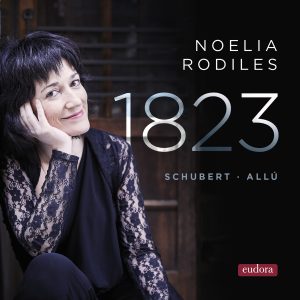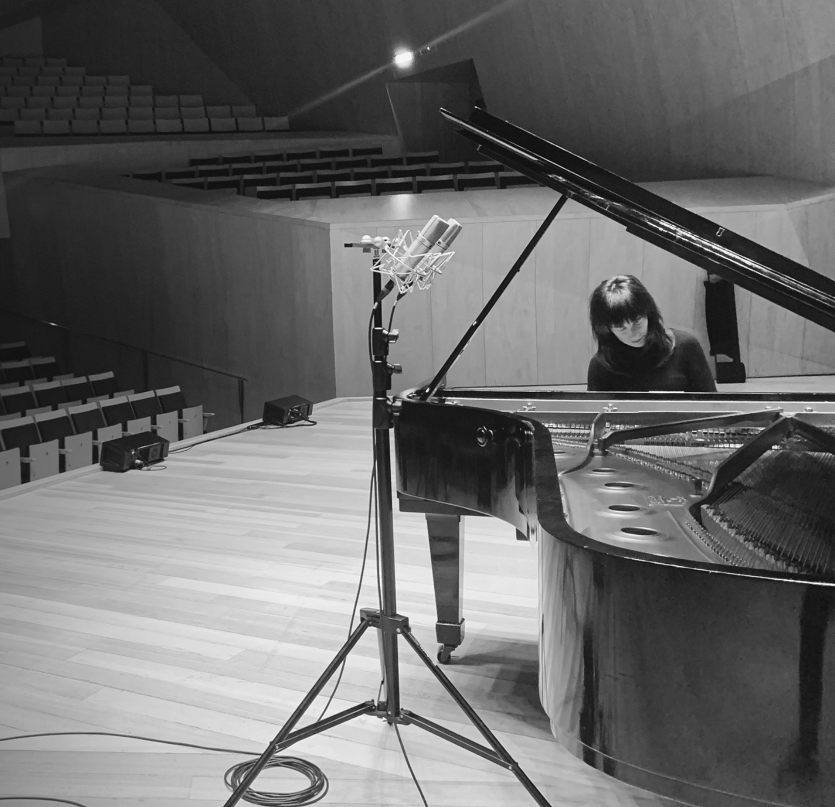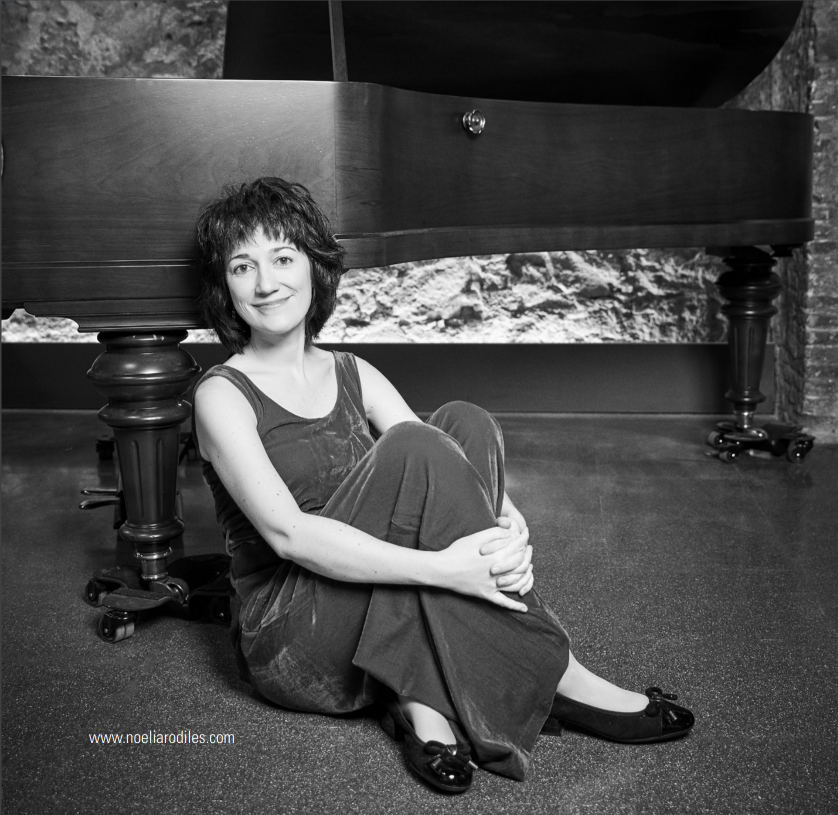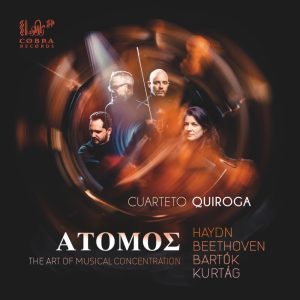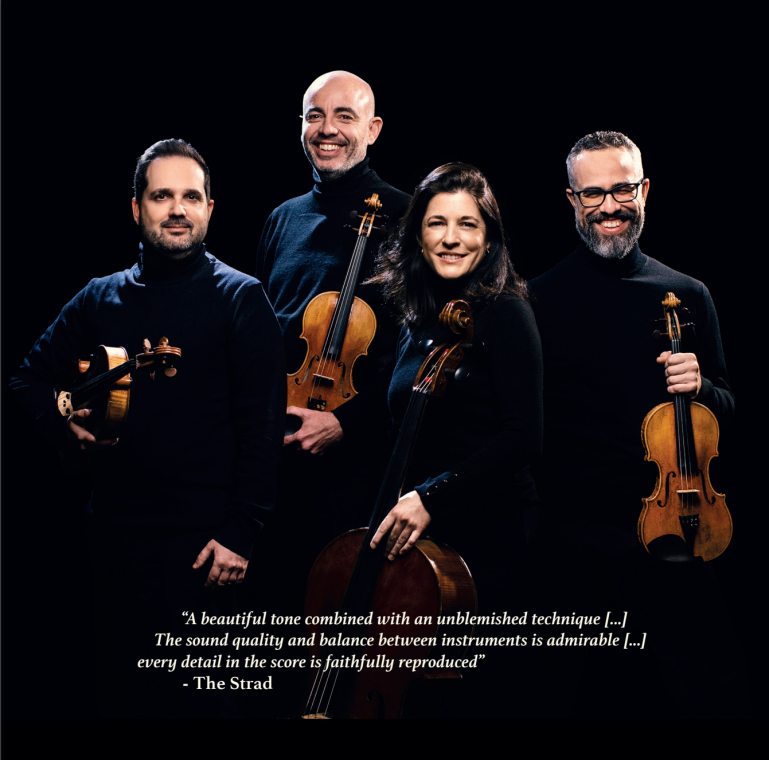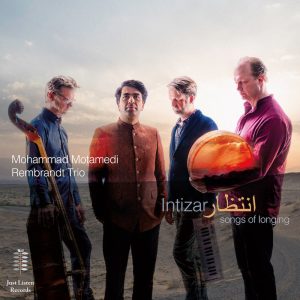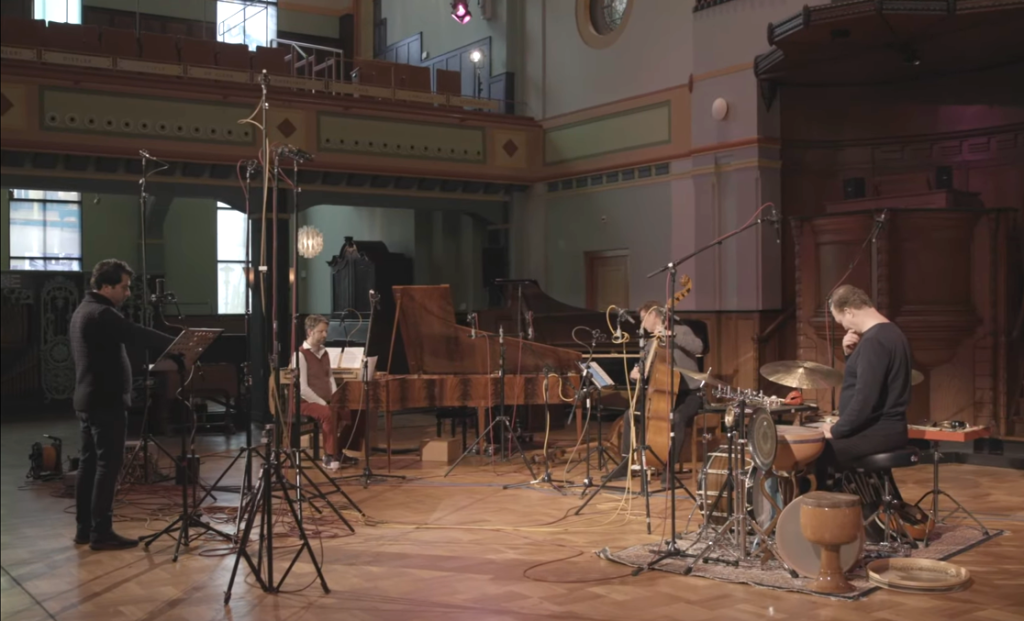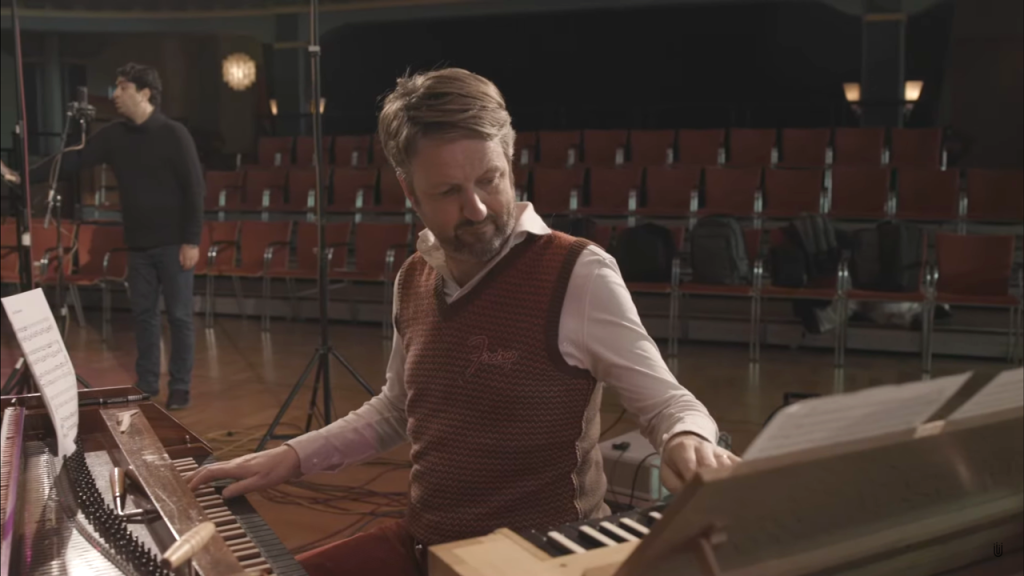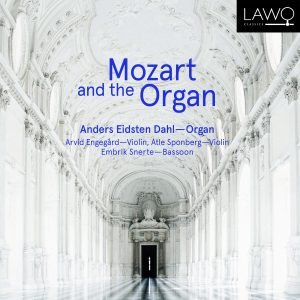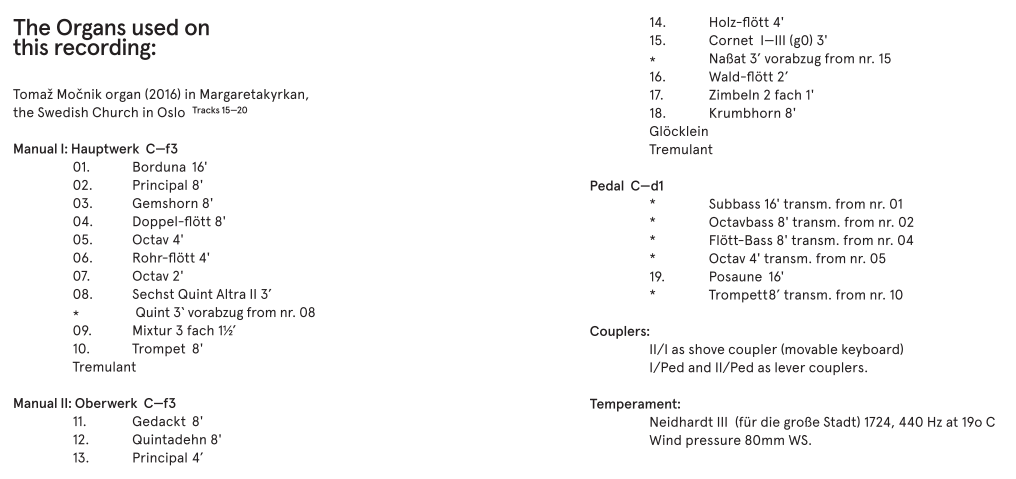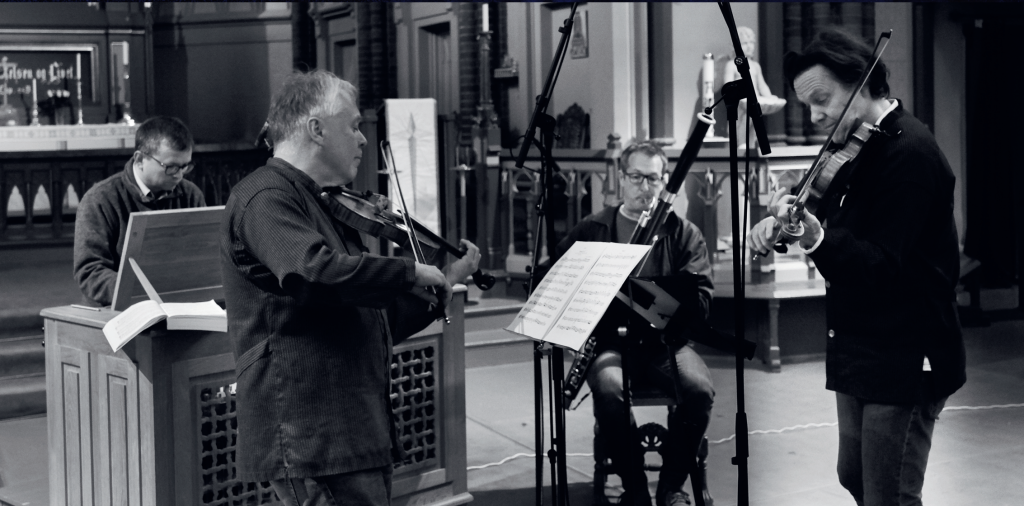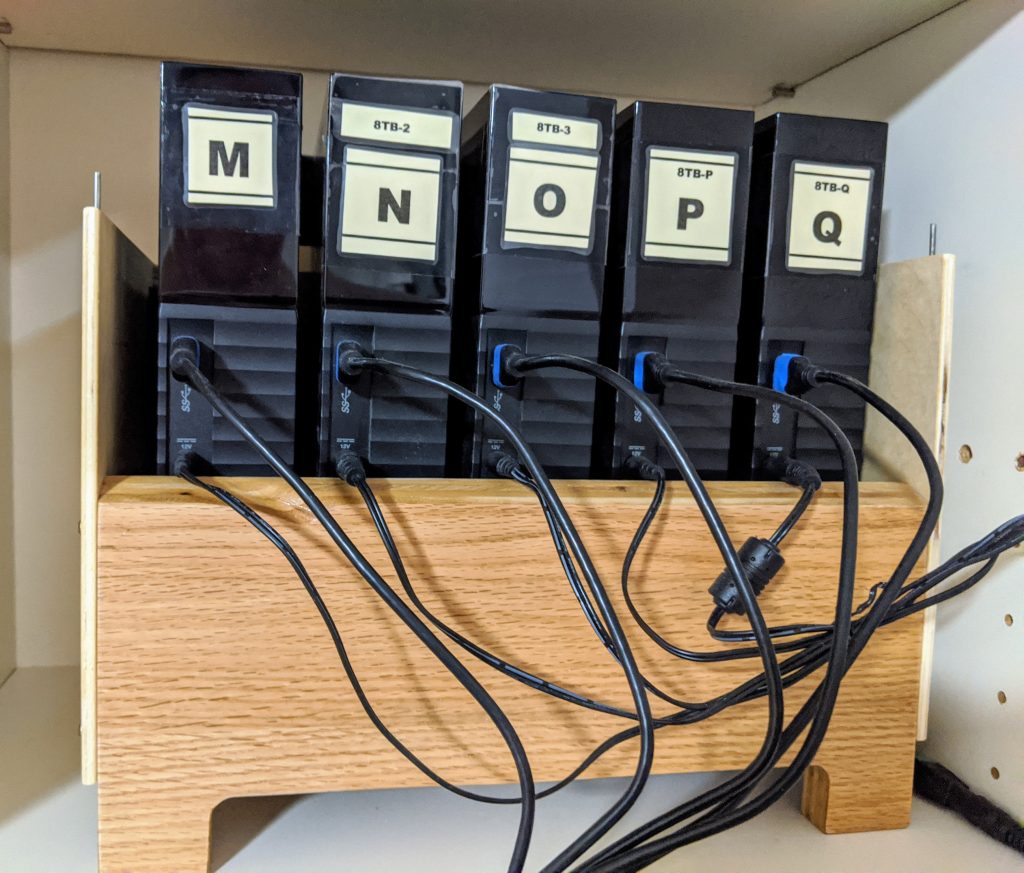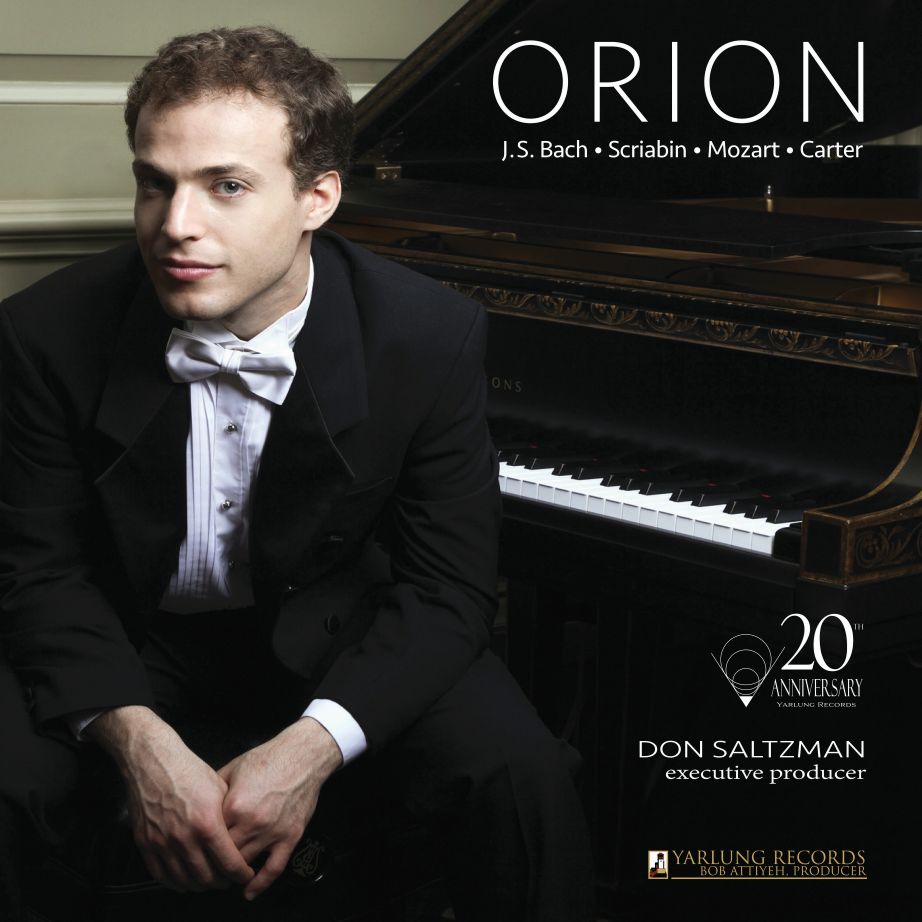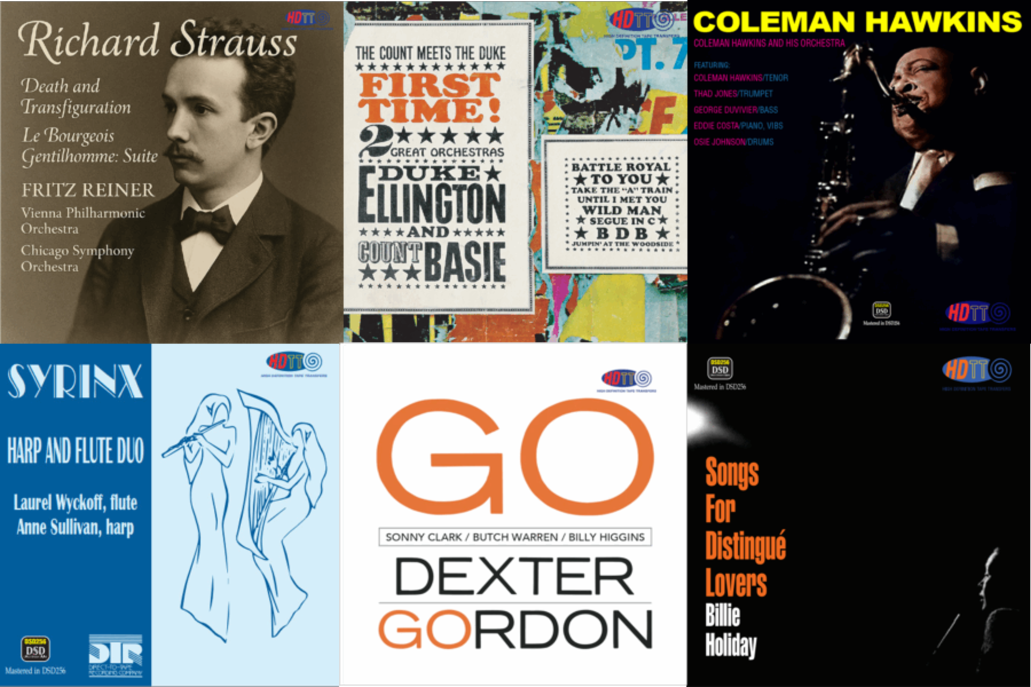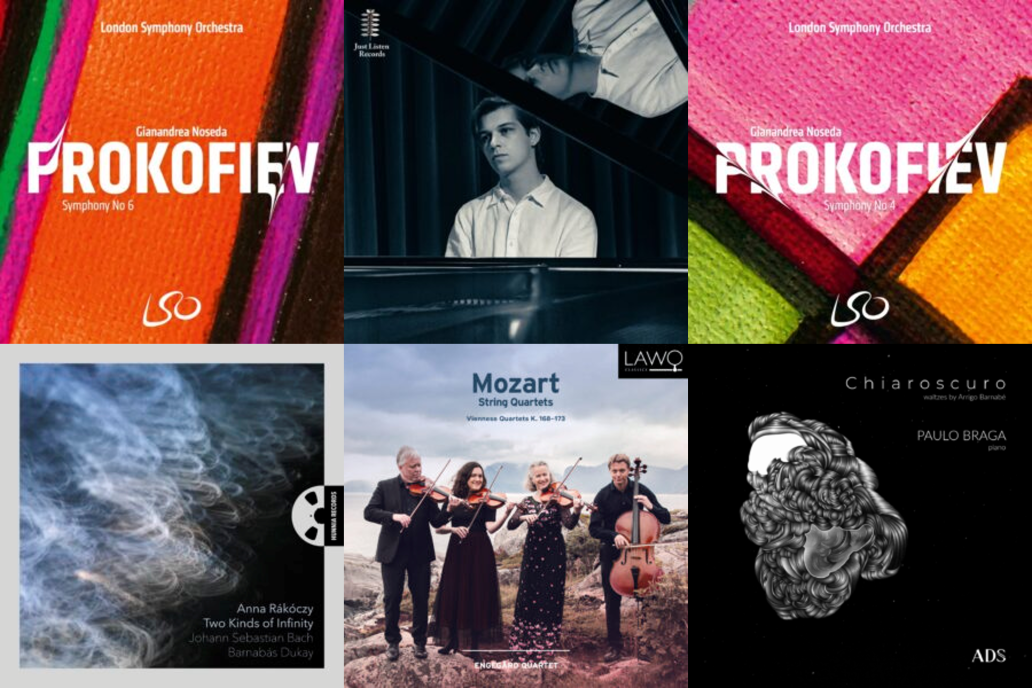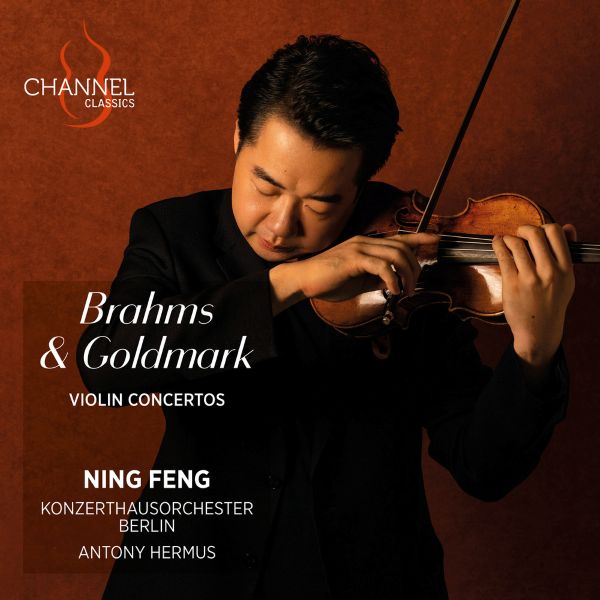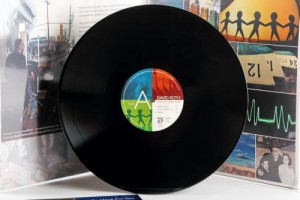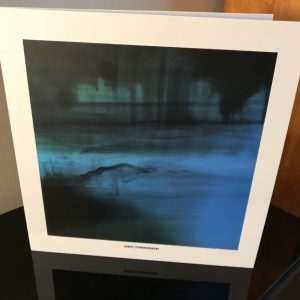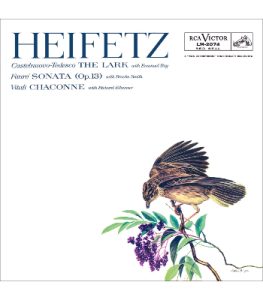September arrived and so has a flood of wonderful new releases from some of my favorite artists and recording labels. Any one of these albums might qualify for "album of the year" recognition in their respective genre, and I've been spending time in seventh heaven listening to them. So, allow me to share.
1823 - Piano Works of Schubert and Allú, Noelia Rodiles. Eudora Records 2023 (Pure DSD256) HERE
The remarkable Moments Musicaux. D. 780 of Franz Schubert (1797 - 1828) are not better played than in this marvelous new recording from the ever rewarding Spanish pianist, Noelia Rodiles. With fierce competition among various excellent performances, all vying for our attention, it is sometimes hard to consider yet another. But one would utterly miss one of the greatest and most rewarding recordings of this work if one fails to spend time with this new release from Noelia Rodiles. She plays with complete conviction, delicious nuance, and delightful subtlety of phrasing, making these works as fresh and engaging as I've ever heard them. Brava!
I admit to having been smitten by Noelia's recordings for Eudora Records. With her first release in 2020 of her solo piano album, The Butterfly Effect (HERE), I thought her to be a truly special pianist. Her release in 2021 of Slavic Soul (HERE), with cellist Fernando Arias, heightened my respect for her and confirmed her ability to rewardingly perform a wide range of music. Since that 2021 release, I've eagerly awaited another album.
And, finally, here is this new recording, 1823, in which she pairs Schubert's Moments Musicaux (published in 1828) with the first recording of Martín Sánchez Allú’s Piano Sonata in E-Flat Major, Op. 1 (1853).
So why the title "1823"? For Noelia, this is a crossover year. In April 1823, the French royalist army crossed the Pyrenees intending to end the constitutional regime in Spain and restore absolute power to King Ferdinand VII. Meanwhile, in Vienna, Franz Schubert was recovering from the first symptoms of a disease that would accompany him until the end of his days and he published a small work for piano under the title of Air Russe. A few years later, that unnoticed piece would appear as the sixth of his Moments Musicaux D.780. And this same year, Spanish composer Martín Sanchéz Allú (1823 - 1858) was born in Salamanca.
Allú's first Piano Sonata in E-Flat Major, Op. 1 (1853), while written later in the century, was intentionally composed very much in a Classical-form stylistically, in honor of the masters of "wise" German music. Given this was his first foray into compositions within this stylistic genre, he applied Opus 1 to the title. And in this release, Noelia gives its first recorded performance.
For an Opus One composition, this piano sonata is exceptionally well crafted and musically interesting. Allu was an established composer in Madrid at the time he composed this work, he'd just never undertaken solo piano compositions in Classical-form before this. For me, this is a very satisfying work, with excellent variety, inventiveness, changes in pacing and dynamics, and a "development that plays with seemingly irreconcilable materials in witty and poetic passages" (as described in the liner notes and with which I concur).
The Recording
Eudora's owner and recording engineer, Gonzalo Noqué, gives us a recording of exceptional clarity that enhances immensely my enjoyment of Noelia's performances. Recorded February 27—March 1, 2023, in the Auditorio de Zaragoza, Sala Mozart, Zaragoza, Spain, and playing the same 1957 Model D Steinway & Sons piano with which Josep Colom made so many of his wonderful recordings for Eudora, Gonzalo applies his exceptional Sonodore LDM-54 1" capsule microphones to create one of the most tonally perfect piano recordings I have in my collection. The timbre, dynamics, and subtle detail of the piano are captured brilliantly. As is Noelia's performance!
Recorded and released in Pure DSD256 (with no DXD processing), this is as beautifully accurate a capture of the sound of a Steinway Grand Piano as one is likely to hear. You owe it to yourself to hear this recording in all of it's Pure DSD256 wonderfulness! Piano recordings just do not get better than this.
Noelia Rodiles, in the recording session from 2023 above, and in portrait.
Atomos: the art of musical concentration, music of Haydn, Beethoven, Bartók and Kurtág, Cuarteto Quiroga. Cobra Records 2023 (DSD256, DXD, stereo, binaural, multi-channel) HERE
This past January I wrote about the marvelous recordings released by the Spanish string quartet, Cuarteto Quiroga. In that article I shared my impressions of six superb albums they released from 2011 to 2021 on the Cobra Records label, and ran on a bit a bit about what so energized me in listening to this group. You will find that article HERE.
Over the past few days I've been listening to their most recent release, Atomos: the art of musical concentration—music of Haydn, Beethoven, Bartók and Kurtág. And once again I am beside myself with excitement about their performances and the quality of the recording. They have again created a masterpiece of an album.
As Cobra Records owner and chief engineer Tom Peeters says of this quartet, "This is one of the best quartets, I think, in the world. Their goal is go for the best with main repertoire. And main repertoire is already recorded so many times everywhere, and still the Quiroga have something to add to it."
The Quiroga play with a perfection of ensemble, a combined delicacy of articulation, a uniformity of intonation, and an endless reservoir of technique—it is an unalloyed joy to hear them play. And to hear whatever music they choose. Their albums are always intellectually challenging, educationally rewarding, and emotionally deep.
In this album they deliver to us the gift of immaculate Haydn, ethereal Beethoven, intense but ever musically interesting Bartók, and the challenge of Kurtág. All in one delicious package.
The album opens with Haydn's String Quartet in D Minor, op.42, which simply dances in the hands of these artists. This is a relatively short, compact work of immense transparency. Don't blink. Pay close attention. There is a lot happening in the course of these brief 18 minutes. And while compact, it is intensely dramatic, as demonstrated in the energy which bursts forth in its opening notes. Each movement is filled with wit, intelligence and beauty—intensely Haydn at his creative best.
We then are moved briskly along to the heady heights of Beethoven's soaring conceptions in his String Quartet in F Minor, op.95, in which the Quiroga treat us to an incomparable intensity of emotion which this work so completely requires. Christened "Serioso" by Beethoven, this work from 1810 reverses earlier explorations of long discursive compositions (e.g., his op.59) to deliver an intensely compressed work in the same form, "expanding the limits of language by contracting them" as the Quiroga write.
This theme of musical compression to its most succinct (and succulent) elements continues with the work by Bartok selected by the quartet. Bartok's String Quartet No.3, they write, "is a radical, unique and utterly enthralling exercise in musical compression. Bartók manages to squeeze a work of towering complexity into a score lasting under sixteen minutes, designed in a single span, an impeccably worked musical arc that brings together in a single indivisible gesture...everything that anywhere else would require mammoth extension." And the Quiroga perform with all of the intensity and precision demanded by this challenging work as it dances, ever faster, with an energy that builds to explosion. Then fades to deep introspection. Then builds again into "an unbridled, almost apocalyptic coda, whose fabulous sounds and wild dances go hand in hand with bursts of astonishing expressive power and dazzling flashes of musical lightning that careen towards the explosive final climax."
Of Bartok's six string quartets, the third is perhaps my favorite, but it is so hard to name just the one. The Quiroga have given us a recording of Bartok's String Quartet No. 2 in their album Terra from 2017 (HERE), and it is a wonderful performance of the work, as fine as any in my library. I would love to have an integral cycle of the six performed by Cuarteto Quiroga because hearing what they might bring to each of these quartets, arguably the greatest chamber works written in the twentieth century, would be an unalloyed joy. More please!!
The album closes with the intimate, very quiet, and almost inaudible, performance of György Kurtág's Secreta: funeral music in memoriam László Dobszay. In this journey of compactness, of compression to the most intensely distilled essence of the music, this final epitaph does seem fitting. To find "the humility to pare oneself down to the minimal essence and allow the music speak for itself, with the most persuasive eloquence and the most moving kind of beauty."
As always in their albums, Cuarteto Quiroga brings to us not just a recital of compatible musical works. They bring an education, an insight, a discovery of mysteries. And for this I am always grateful for their albums, to be listened to all the way through, to be treated as an integral work of art unto itself for the message these marvelous artists have to share.
A further note about Cuarteto Quiroga
For me, all of the selections on this album come to life due to the extraordinary shared musical sensitivity and style of these superb musicians. Never mere technicians, never simply mechanical perfection. The Quiroga play with perfection while fully exposing the essential beauty of the music they share with such joy. Spending an hour with the Quiroga is like time spent in the open pristine natural areas of our most beautiful natural preserves—they refresh, invigorate, and bring joy. And such a joy is this new album. How more emphatically can I say, get this album!
The Recording
Tom Peeters, Cobra Records owner and recording engineer, has for many years now consistently recorded in stereo, multichannel and binaural. In making binaural recordings, Tom is unique. And for headphones listeners, his binaural recordings are really special. Heard through headphones, a binaural recording may give up a bit of ambiance from the rear channel microphones that can be mixed in during post-processing, but what one gets is an utterly transparent sound that precisely localizes all of the instruments in the sound field. If you listen to headphones, you really ought to experience these binaural recording from Cobra Records. Consider reading my earlier article, Stunning Binaural Recordings from Tom Peeters at Cobra Records.
If you'd like to sample the music and wonderful performances, give this treat yourself to this snippet from their performance of the Bartok String Quartet No. 3:
Cuarteto Quiroga
Intizar, songs of longing, Rembrandt Trio, Mohammad Motamedi. Just Listen Records 2023 (32-Bit DXD) HERE
When the sounds of ancient Persia meet the instruments of Europe, delightful cross-cultural synergies arise. When musicians of the caliber of the Rembrandt Trio and Iranian born singer Mohammad Motamedi collaborate, the senses delight. Thus we have one of the more interesting, engaging and musically satisfying releases of this year: Intizar - Songs of Longing.
Motamedi, a celebrated singer in Iran, is a masterful improviser. He brings a deep repertoire of Iranian poetry around which these various songs revolve. The Rembrandt Trio has spent decades traveling and performing in the Middle East, absorbing the sounds and rhythms of that complex world. This album combines the more spiritual, traditional Persian repertoire, as well as a number of more contemporaneous arrangements of songs, in a fascinating collaboration by musicians from different continents exploring a shared love of the music and improvisation.
When they first discussed working together on a complete album, no one was quite sure how this might proceed. Motamedi writes in the enclosed booklet:
"My first rehearsal with the Rembrandt Trio took place at Rembrandt’s house. I didn’t know what they would play and what I should sing. Practice started. They started playing. It was a strange experience. Baroque style instruments, but the music that was played was in the style of old Iran. It was a unique dream sense. I had to sing something impromptu. I always imagine myself in a certain place and atmosphere to sing. That day, I didn’t know to imagine myself in a theater in a European city or in the old architecture of Iran. I closed my eyes and stood in the sky where I could see both Iran and Rembrandt’s house from above."
The opening track of the album, "Intizar" (Waiting) evidences this shared exploration of cultural traditions and improvisation. It is one of two beautifully melancholic songs Mohammad suggested for the recording, songs he remembered from his early childhood. Rembrandt Trio double-bassist, Tony Overwater, creatively proposed adding three guest musicians, cellist Maya Fridman, violinist Myrthe Helder and clarinetist Maarten Ornstein, to flesh out a full new arrangement for this piece. It works brilliantly.
The ever-remarkable cellist Fridman, clarinetist Ornstein and violinist Helder continue with the Trio and Motomedi on several other tracks, adding extraordinary additional depth and complexity to the music. It is fascinating to hear the complex interactions of instrumental timbre that is sensitively brought to play by these very gifted artists.
This album is a very engaging mix of planned composition and improvisation at the highest level of music making. Ann said most succinctly, "This is extraordinarily well done. It is simply delightful to hear. And the singer, Mohammad Motamedi, is just very, very good."
If you enjoy World music or have any interest in expanding your musical horizons, I highly recommend this album. I can't imaging anyone being disappointed.
Instrumentation
The sound qualities of the instruments in this recording are a unique blending of Persian and European musical traditions. This note in the booklet about the pianos played by Rembrandt Frerichs illustrates the unique sound qualities of the instruments in this album: "Rembrandt plays two historical pianos on these recordings. Firstly, the Anton Walter fortepiano, a copy by Chris Maene after the instrument that Mozart had in his house (1790), built especially for Rembrandt, supported by the Dutch Musical Instruments Foundation (NMF). Secondly, the Erard concert grand, built in 1889. Both instruments' strikingly 'slender' sound comes from parallel stringing and a low pressure of the strings, making them a perfect match for Persian music."
And more information from the NativeDSD album page:
"The musical system of Persian music differs from the Western European system in that it is modal in nature and uses microtonal ranges, while European music uses harmony and tempered tuning. The piano, designed as a tempered instrument, is not ideal for microtonal music. Nevertheless, an Iranian piano school has emerged that experiments with the piano because of its similarity to the santur, a hammered dulcimer. In this, Rembrandt Frerichs has developed his own language by using the old fortepiano (from the time of Mozart) as a starting point. This instrument is more closely related to the santur and, because of its construction and more subtle sound, allows itself to be better used for the modal Persian ranges.
"Rembrandt Frerichs played several instruments on this album: the Walter fortepiano (from 1790), an Erard fortepiano (from 1889) and a number of organs from the Orgelpark. For the piece “in the Middle of the garden,” he tuned the Walter fortepiano to the dasthgah Nava, using microtones. Tony Overwater uses both the violone, forerunner of the double bass and related to the viola da gamba, and the double bass on the album. Vinsent Planjer plays a self-assembled set of percussion instruments that he calls the Whisperkit."
The Recording
Recorded by inestimable Jared Sacks at the Orgelpark in Amsterdam, the sound quality is superb. Balanced, detailed, and transparent. The recording reveals all of the wonderfully distinctive timbre of these instruments. And the very open, natural acoustical environment of Orgelpark allows the full harmonic overtones of these instruments to be set free and fully develop.
A note about format: I'm listening to the 32-bit DXD file, which is the native format of the Pyramix Workstation used to mix the originally tracked DSD256 channels. On my system, it sounds better than any of the other released formats. But your mileage may vary depending on the capabilities of your DAC, so do some listening tests. On our second system using a chip-based DAC, the DSD256 file sounds best.
Recording session December 19 and 20, 2021 at the Orgelpark in Amsterdam.
For a preview and some additional insight into the making of this album, I highly recommend this 3:20 minute video released by the group:
Mozart and the Organ, Anders Eidsten Dahl. Lawo Classics 2023 (32bit DXD) HERE
This is a completely delightful album of charming, energetic music. The first track opens with a sprightly performance of Mozart's Church Sonata in E-flat Major, K.67/41h for 2 violins and bassoon. And it is such a treat! The music rollicks along through thirteen more of his Church Sonatas, each a lively and engaging as the first. This combination of instruments is supplemented in various of the sonatas by a small chamber organ providing continuo. The contrasting timbre of the bassoon and chamber organ is a continuing entertainment in these teasingly irreverent compositions. Performed in chronological order, one hears the organ gain a greater and greater role in succeeding compositions, each of which is only two, three or four minutes in length.
Mozart's seventeen church sonatas are infrequently performed, but their neglect has nothing to do with their music quality—which is of high excellence. Rather, it has been difficulties in deciding where and how to program such short pieces, the first being only 1:37 minutes in length! Perhaps this album, as an integral recital, is that perfect setting for them today. I found them eminently enjoyable in this arrangement.
The first three of these pieces date from 1772, when sixteen year old Mozart had been appointed Konzertmeister to the Archbishop in Salzburg. The Archbishop insisted that Mass last not longer than 45-minutes, and thus these Church Sonatas fulfilled a need for brief instrumental works that could fit between readings as the Mass moved briskly to completion. Ever the disruptive influence, Mozart rarely distinguishes between sacred and secular musical styles, as these sonatas aptly demonstrate. By the time we reach track 6 with K.212 we hear that maturing of Mozart's musical language, he had written his Symphony 29 just a year earlier and one can hear that greater compositional complexity reflected in K.212. To suggest that these are works Mozart "composed in his sleep" is just decidedly not so—they are complex works creatively compacted to serve a very specific purpose, and to that end they are brilliant.
Following the Church Sonatas, this album treats us to the magnificent Adagio and Allegro in F minor, K.594 for full organ in solo. Written on commission in 1790, Mozart complained bitterly in a letter to his wife that he lacked inspiration to complete the piece: "It is loathsome...it bores me." Well, bored as he may have been, he nonetheless created a work of great intelligence that is both deeply expressive and subtle. The beauty of this work makes one wish we had more organ compositions from his pen.
And then comes a work that could hold pride of place in any organ recital, the Fantasia in F minor, K.608. It is an impressive work of great scale and I've long valued hearing it. To hear it so well performed and on such a lithe and subtle organ as the Tomaž Močnik built organ of St. Margaret's Church in Oslo is enjoyment to savor.
The Recording
The sound quality captured by Lawo Classics recording and mastering engineer Thomas Wolden is once again superb. The balance among the instruments in the Church Sonatas is exemplary, with excellent detail and beautifully natural timbre. The capture of the organ of St. Margaret's Church in Oslo is a nicely managed as any organ recording in my collection, and is greatly enhanced by Wolden's respect for allowing the natural acoustic balance of the church itself fully resonate with the notes of the organ while maintaining utter clarity. This is simply superb engineering and a complete sonic delight.
A note about format: I'm listening to the 32-bit DXD file, which is the native format of the Pyramix Workstation used to mix the originally tracked DSD256 channels. On my system, it sounds better than any of the other released formats. But your mileage may vary depending on the capabilities of your DAC, so do some listening tests. On our second system using a chip-based DAC, the DSD256 file sounds best.
Recording session with organist Anders Eidsten Dahl, violinists Arvid Engegård and Atle Sponberg and bassoonist Embrik Snerte
All photos provided courtesy of the respective record labels.




